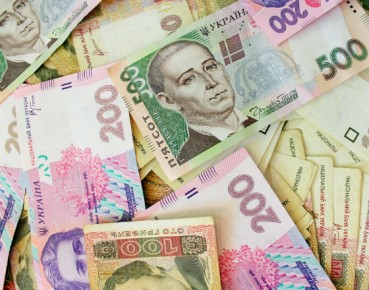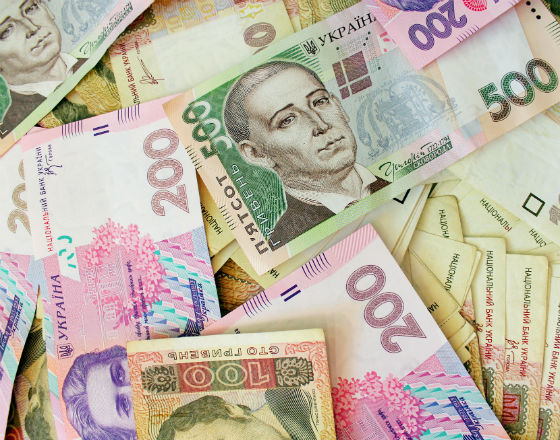
(©PAP)
In late December 2019, non-residents increased the amount invested in the purchase of Ukrainian government bonds denominated in the UAH to the UAH115.5bn (USD4.44bn) and their market share in these securities exceeded 14 per cent. In just one week of December they bought bonds for the amount of the UAH5.4bn (USD207.7m). In total, since the beginning of 2019, they have increased their share eighteen-fold — by the UAH109bn (USD4.2bn). For comparison, throughout 2018, non-residents invested only the UAH1.13bn (USD40m at the exchange rate applicable at that time).
In the Ukrainian central bank, the NBU, the rapid growth in demand for bonds denominated in the UAH is linked to May 2019 establishment of cooperation by Ukraine with the German depository Clearstream and the simplification of market access to foreign buyers. Consequently, last year non-residents bought government bonds denominated in hryvnia for the amount of approx. USD4.3bn. According to the NBU, the inflow of these funds fostered the recovery of both primary and secondary bond markets. According to NBU data, the average yield on government bonds issued last year was 16.9 per cent for the UAH, 5.9 per cent for the USD and 3.4 per cent for the EUR-denominated bonds.
The “empty” USD4bn dollars pumped in by non-residents hit Ukrainian companies with a devastating force, and consequently the system of public finances, boosting the exchange rate of the UAH against the USD and radically reducing the profits of Ukrainian exporters, including budget revenue. State revenues from customs duties and VAT on imported goods was also lower than projected — a much higher exchange rate than the actual rate and respectively higher amounts in the UAH were assumed in the budget. Consequently, in mid-December 2019, the Ukrainian government suspended most of the payments since there was not enough money in the state coffers. The only payments left are those that the government has to pay out pursuant to the law — public sector wages, pensions and social assistance. The Minister of Finance argued that only “exotic” expenditure had been cut, however, the reality is contradictory. Among others, the amount of the UAH200m foreseen in the budget to launch the construction of a new airport common for the Dnipro-Zaporizhzhya duopolies in eastern Ukraine was frozen — the government approved the financial program for the construction just a few months earlier, in June last year.
Debt versus the economy
“The sharp decline in the USD exchange rate has become a real threat to the national economy. The state budget has not received proceeds amounting to tens of billions of hryvnias since Ukraine is falling more and more deeply into a bond spiral,” commented the expert of the Ukrainian Institute of the Future, Danil Monin.
The economist perceives the lack of coordination between the government and the central bank as the source of the process. For the NBU, the main indicator is inflation which, owing to the currency inflow and the related revaluation of the hryvnia, fell to 5.1 per cent on an annual basis.
The negative trend was aggravated by a kind of competition for the hryvnia between the central bank and the Ministry of Finance. The NBU issues certificates of deposits bearing an interest rate of 18 per cent, thus drawing money from banks and reducing the supply of loans. “The central bank is sterilizing the UAH100bn of excess liquidity in the banking sector,” Mr. Monin comments. As a result, banks operating on the Ukrainian market reduced their bond portfolio in 2019, with non-residents remaining the only significant buyers.
In order to plug the growing public finance deficit, the government has to continue issuing the bonds, which results in further appreciation of the exchange rate and its continued growth. “If such a situation continues, we risk a lack of balance in the public finance system. It is necessary to make foreign capital stop buying bonds somehow or at least minimize its share,” the economist believes.
The turmoil caused by the massive sale of the UAH-denominated bonds is reducing Ukrainian farmers’ chances of buying arable land. Detailed calculations were presented by Nikolai Volkov of Raiffeisen Bank Aval, explaining that the key factor to be taken into account by banks when granting loans for land purchase will be the financial condition of the holdings, including the EBIDTA profit level. And this, due to the changes in the hryvnia exchange rate triggered by bond purchases, has decreased, which will translate into a decline in lending limits.
“Earlier, good agricultural business earned an average of USD300 per hectare, which means the EBIDTA in the range of 30 per cent. Now this indicator is projected at a level of 10 per cent. The customer will therefore be able to use an investment facility which is three times lower than before,” assessed the Ukrainian banker. Consequently, tenants who have not taken out other loans will be able to purchase up to 20 per cent of the land they cultivate, while those who have already taken out loans for other purposes will be able to purchase only 10 per cent.
The government argues that the effects triggered by the mass purchase of bonds by non-residents will be beneficial to the Ukrainian economy. “We now face the situation of constructive destruction. The new monetary policy of the central bank is breaking the businesses that wanted to take advantage of the inflationary and devolutionary benefits. Government reforms close those schemes which have been rooted for decades and which have generated income to certain groups of the population at the expense of others. I am sure that thanks to such an environment we will have a completely different economy in the near future, much more competitive than the previous one. But there will be winners and losers on the way to the target. As the experience of recovering from previous downturns has shown, the Ukrainian economy has a very high degree of adaptation to new conditions. That’s why I believe that everything will be all right and we can expect an economic leap,” argued Deputy Minister of Economy Serhij Nikolaichuk.
Who is buying the bonds?
The Vice-Chairman of the Committee for Finance of the Ukrainian Parliament, Alexander Dubinski, has published a list of the largest buyers of the UAH-denominated bonds.
As much as half of the securities sold last year were deposited with the German Clearstream. 75 per cent of them were bought by Citygroup from London, 10 per cent by ICBC Standard Bank, 7.5 per cent by Goldman Sachs, 4.2 per cent by Merrill Lynch, and 2.6 per cent by JPMorgan Chase.
As Mr. Dubinski claims, in fact, there are buyers from Ukraine behind them. “These are the brokers behind whom the actual buyers hide. What for? So that no one can find out who the end buyer is. Keeping bonds abroad is very expensive, costs four to five times more than in Ukraine and “consumes” even a third of the interest. However, there are some people who are ready to pay a high price so that nobody in the country finds out who the owner of these securities is,” Mr. Dubinski commented.
In his opinion, the “financial pyramid” may result in a collapse of the economy, which will lead the government to settle the state’s agricultural land for debts it will be unable to repay. The Act on the Agricultural Land Market prepared by the government includes the provisions that allow foreign banks operating in Ukraine to own an unlimited amount of land.
What should be communicated to the president?
In January 2020, in Kiev recordings of the meeting held in mid-December 2019 were published. The participants were: the Prime Minister, Alexei Honcharuk, and the President of the Ukrainian central bank, Yakov Smolij, his deputies, Yekatierina Rožkova and Dmitry Solohub, the Minister of Finance, Oksana Markarov, and Timofey Milovanov, the Minister of Economic Development, Trade and Agriculture. They were wondering how to explain to the Ukrainian President Volodymyr Zelensky the reasons for the strengthening of the UAH exchange rate, which led to the state budget deficit and a slowdown in economic growth in the fourth quarter of 2019.
The most important officials in charge of finance were considering explanations for the president, which will make him stop digging into the subject of bonds. They concluded that it would be best to tell him that thanks to the strengthening of the UAH, olivie – the traditional salad on New Year’s Ukrainian tables – will not be more expensive next year than now.
Despite the critical opinions of the experts, the government continues to sell the UAH bonds. The Ministry of Finance has even announced that by 2024 it wants to completely abandon the issue of bonds denominated in foreign currencies and issue only hryvnia bonds. In mid-January, the Ukrainian Ministry of Finance sold four issues for the total of UAH6bn (USD200m), with maturities, depending on the issue, from April this year to November 2023, and correspondingly differing interest rates – from 11.7 per cent for the latter to 18 per cent for bonds maturing in March next year.
“The debt we incur in foreign currency turns out to be very expensive. Given the high risk associated with foreign debt, we will gradually move to internal bond issues only in the national currency,” Polina Jarova from the Ministry of Finance announced.


